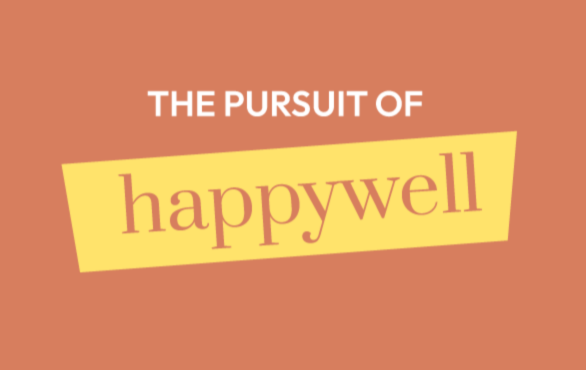Episode 3: Decoding Self-Sabotage
Are you constantly setting goals only to watch yourself undermine them? You're not alone. Self-sabotage isn't about laziness or lack of willpower—it's about how your brain is wired. Let's explore why we self-sabotage and how to finally break free from this frustrating cycle.
What Self-Sabotage Really Is (And It's Not What You Think)
Contrary to popular belief, self-sabotage isn't self-harm—it's self-preservation. Your brain doesn't distinguish between positive and negative change; it simply perceives all change as potentially threatening.
"The brain doesn't differentiate between positive change or negative change. It just sees change as a very scary thing."
When you try to establish a new habit or pursue a big goal, your brain sounds the alarm. Why? Because your brain prioritizes efficiency above all else. Existing patterns—even unhealthy ones—require less energy than creating new neural pathways.
This is why you find yourself mindlessly scrolling social media instead of working on your side hustle, or reaching for comfort food when you've committed to healthier eating. These aren't conscious decisions—they're your brain's automatic protection mechanism.
The Emotional Drivers Behind Self-Sabotage
Self-sabotage is really about avoiding uncomfortable emotions. Your brain is trying to protect you from:
Fear of failure: If you don't try, you can't fail
Fear of success: If you succeed, can you maintain it?
Frustration: When tasks feel too difficult
Rejection: When you worry others won't approve
We each have our unique stress responses—fight, flight, freeze, or fawn—that manifest in how we avoid discomfort. Some of us stay busy to avoid difficult feelings, while others numb out with distractions.
"Self-sabotage isn't self-harm—it's self-preservation. It's your brain's way of coping with distress."
3 Powerful Strategies to Stop Self-Sabotaging
1. Practice the Power Pause
The next time you catch yourself procrastinating or reaching for a distraction, pause for just five seconds and ask yourself:
What am I feeling right now?
What am I actually avoiding?
Is this discomfort truly threatening, or can I move through it?
This brief moment of awareness creates space between stimulus and response—where your power to choose differently lives.
2. Build Your Frustration Tolerance
Research shows that frustration tolerance—not motivation—is the better predictor of success. Most people don't sabotage because they lack desire; they sabotage because they can't sit with discomfort.
"What is my frustration tolerance? When was the last time I actually put myself in a situation to grow it?"
To strengthen this muscle:
Practice sitting with discomfort rather than immediately seeking relief
Take small, consistent steps toward difficult tasks
Reframe frustration as evidence of growth, not failure
3. Ask the Million-Dollar Question
After a self-sabotage moment, skip the self-criticism and instead ask:
"What was I protecting myself from?"
This question transforms hindsight into insight, helping you identify patterns and rewrite your narrative around challenging tasks.
The Truth About Transformation
"Consumption of information doesn't create transformation. Taking action does."
You can read every self-help book and listen to every podcast episode, but knowledge alone won't change your behavior. Real change happens when you apply awareness to action.
"Stop buying planners. The planner isn't solving the problem."
The solution isn't another productivity tool or motivational quote. It's developing self-awareness that puts you back in the driver's seat of your life.
Your Next Step: From Awareness to Action
Self-awareness gives you choice. It transforms you from someone reacting to life to someone actively creating change.
Right now, take 30 seconds to reflect:
Where am I self-sabotaging the most?
What discomfort am I running from?
What small step can I take today—not tomorrow—to shift this pattern?
Then take that step, however imperfect. Because imperfect action always beats perfect intention.
Did this post hit home? Subscribe to The Pursuit of Happy Well podcast for more insights that transform knowledge into action. Share your self-sabotage story in the comments—your vulnerability might be exactly what someone else needs to hear today.
Next Episode: The Invisible Load
Join us next week as we unpack The Invisible Load—the unseen mental and emotional burdens we carry that lead to stress and burnout. You won’t want to miss this one!
Join the Movement
Ready to redefine what success and happiness look like for you?
Subscribe on Apple Podcasts
Follow on Spotify
Watch full episodes on YouTube
Join the conversation on Instagram
Share with friends who are also questioning the standard success narrative
Remember, you're not just here to exist—you're here to thrive. Keep going, keep growing, and join us next time on The Pursuit of Happywell.
About Your Hosts
Scott and Kristen built a $20+ million business before realizing that traditional success metrics weren't telling the whole story. They've coached thousands through both business and life transformations, learning firsthand that the path to fulfillment isn't what social media portrays. Based in Colorado with their two kids and two dogs, they bring authentic conversations about what actually creates a well-lived life in today's complex world.
Follow us on social! Kristen’s Instagram | Scott’s Instagram
Join our growing Podcast Community NOW 2.5K and climbing


